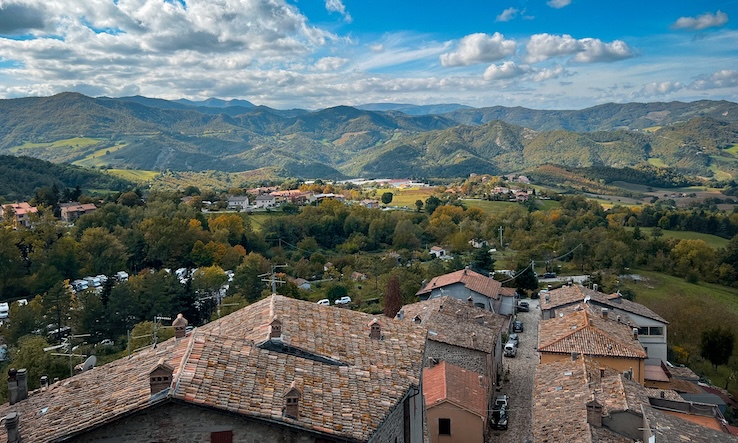
Some travellers chase Italy’s big-ticket cities. I chase its borghi — those pocket-sized medieval villages where stone lanes twist under flowered balconies, where the church bells mark time more faithfully than your phone, and where the scent of baking piadina drifts lazily across a sunlit piazza.
In Emilia-Romagna, the borghi are more than pretty postcards. They’re keepers of history, guardians of food traditions and, for me, the best excuse to slow down and linger.
If you’re searching for hidden gems of Emilia Romagna, these ten charming villages are my favourites — each with its own story, its own rhythm, and at least one reason you’ll be planning a return before you’ve even left.
Sant’Agata Feltria
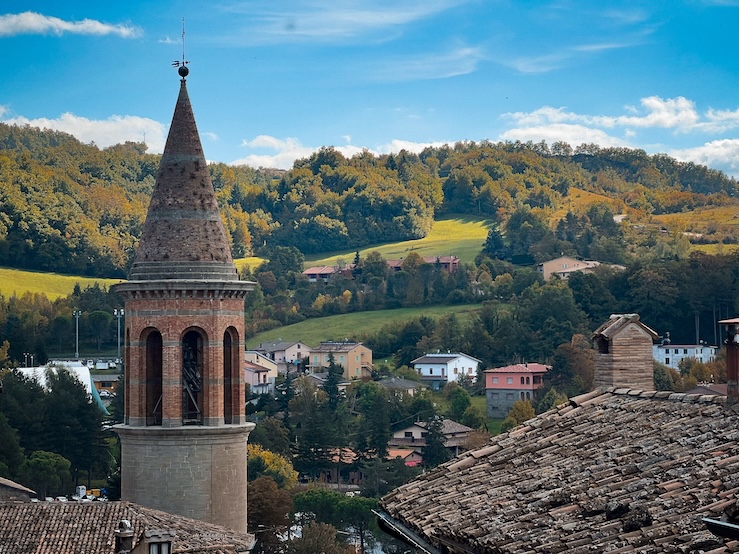
I first discovered Sant’Agata Feltria on a sunny October morning, when the Fregoso Fortress emerged from the mist like a ship out of time. Its towers have watched over this hilltop for centuries, but come autumn, the real magic is in the streets below: the National White Truffle Fair, which is held every Sunday in October.
The air fills with that unmistakable earthy perfume, and every food stall has a truffle special scribbled on the chalkboard.
In December, Sant’Agata trades truffles for twinkling lights as it becomes the Christmas Village, one of the most atmospheric holiday markets in Italy.
Wooden chalets spill over with artisanal toys, wool scarves, and seasonal treats, while the scent of roasting chestnuts leads you straight to the heart of the piazza.
San Leo
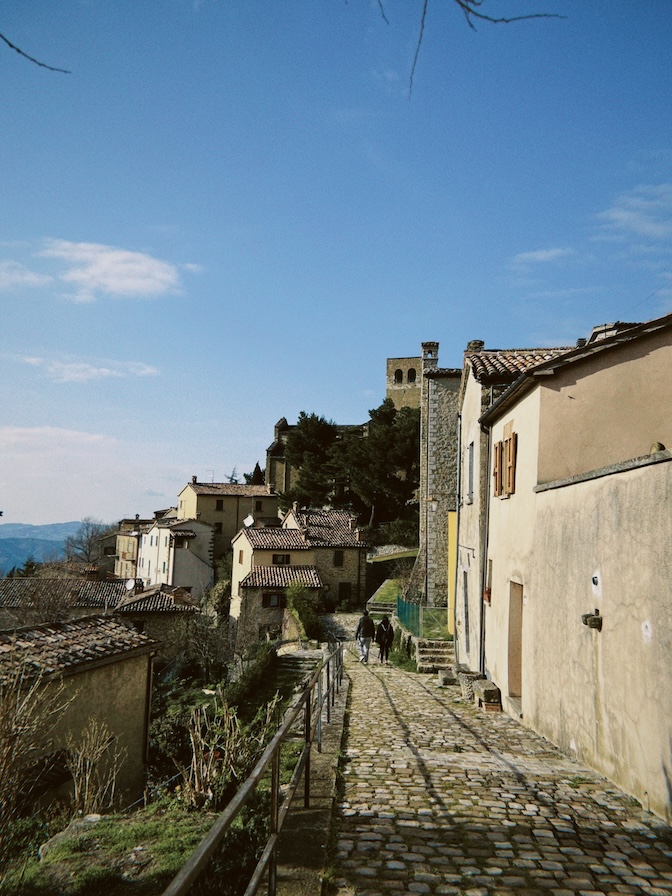
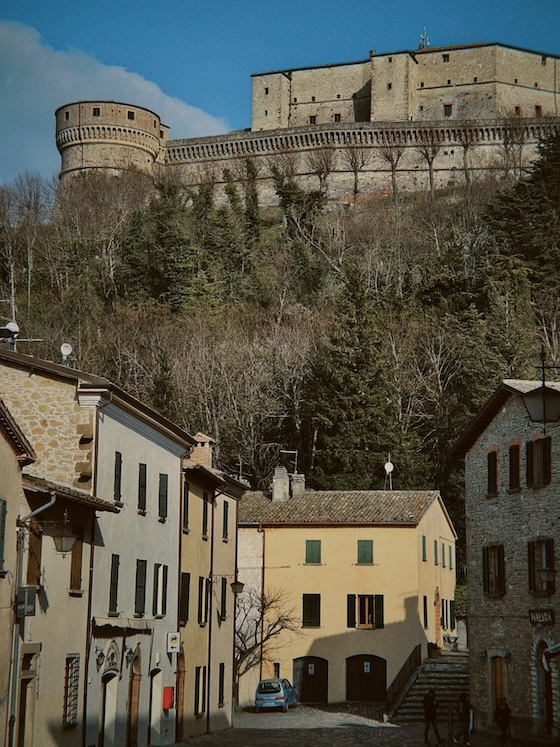
Perched on a rocky outcrop so sheer it looks almost impossible to reach, San Leo feels like a fortress in the sky. Catch your first glimpse from the winding road into town, and you’ll find yourself momentarily breathless, unable to look away.
Its citadel has seen everything from medieval sieges to the imprisonment of Count Cagliostro, the notorious alchemist, under the Papal State. Today, the fortress is remarkably well-preserved, and its museum tells stories of espionage, rebellion, and intrigue.
Standing atop the ramparts, the panorama sweeps from Apennine ridges to the Adriatic’s silver line.
Down in the borgo, the Romanesque parish church and the 12th-century cathedral are built from the same pale stone as the cliff itself, blending so seamlessly you might believe they’ve always been there.
Santarcangelo di Romagna
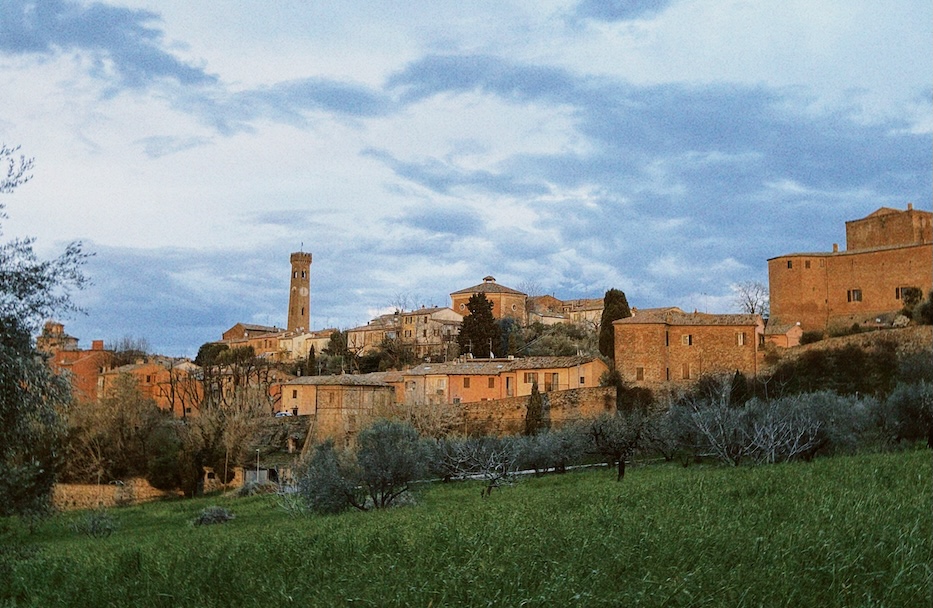
Santarcangelo is the kind of town where you “pop in” for an hour and find yourself still there at sunset.
Above ground, it’s a painter’s palette of pastel facades and wrought-iron balconies; below ground, a warren of mysterious tufa caves whispers its medieval secrets.
Come in November for the Fiera di San Martino, affectionately known as the Fiera dei Becchi. Around November 11, the streets come alive with sizzling chestnuts, live music, and wine flowing from makeshift counters.
The name — “festival of the horned ones” — carries cheeky local humour, marked by ox horns festooned with colorful cords dangling under the arch in the main piazza. Legend has it that if the horns sway as a couple passes beneath, one of the partners may be unfaithful.
Verucchio
They call Verucchio the “cradle of the Malatesta,” but its history stretches even further back, to the Villanovan civilisation — an Iron Age culture whose finely crafted jewellery and pottery have been unearthed in the surrounding hills.
Many of these treasures now rest in the Museo Civico Archeologico, housed inside the Rocca Malatestiana itself.
The fortress still guards the hilltop like a patient sentinel. From its ramparts, the view sweeps in two directions at once: eastward to the blue shimmer of the Adriatic, westward to the green folds of the Marecchia Valley.
On a clear day, the horizon blurs so beautifully that sea and sky seem to merge into one.
Bertinoro
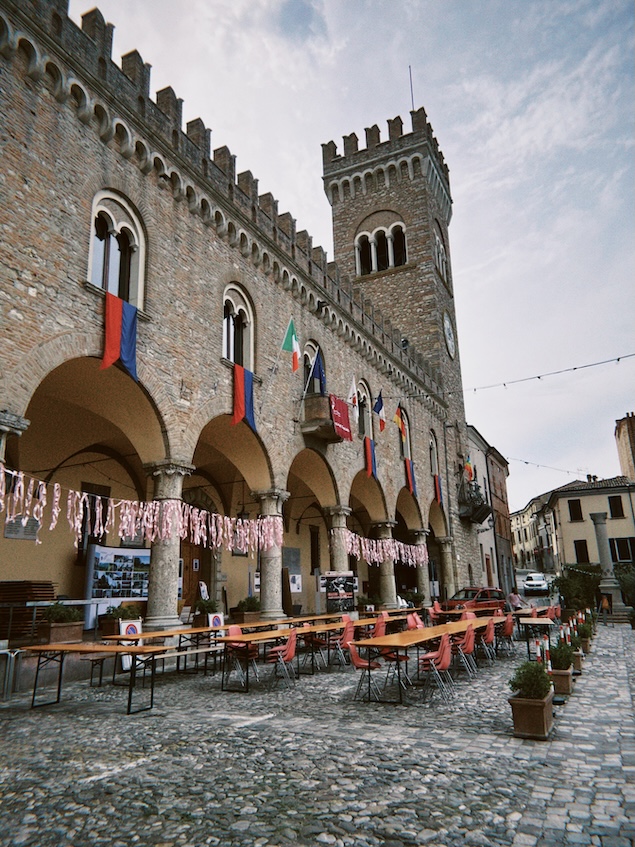
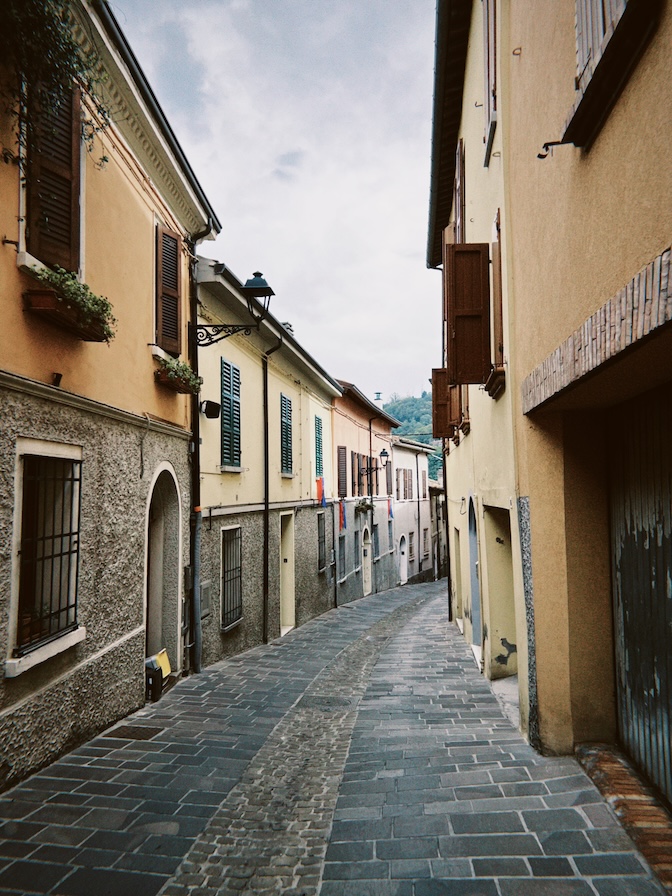
Bertinoro isn’t shy about its views — they call it the “Balcony of Romagna” for good reason. On a clear day, you can see across vineyards, olive groves, and the rolling plains all the way to the coast.
In the main square stands the Colonna delle Anelle (Column of the Rings), where travellers once tethered their horses to signal they sought hospitality from the local families.
That tradition is alive in every welcome you’ll get. Stop in an osteria for a glass of golden-hued Albana wine, and you’ll likely leave with more than just a drink — you’ll leave with a new friend.
Brisighella
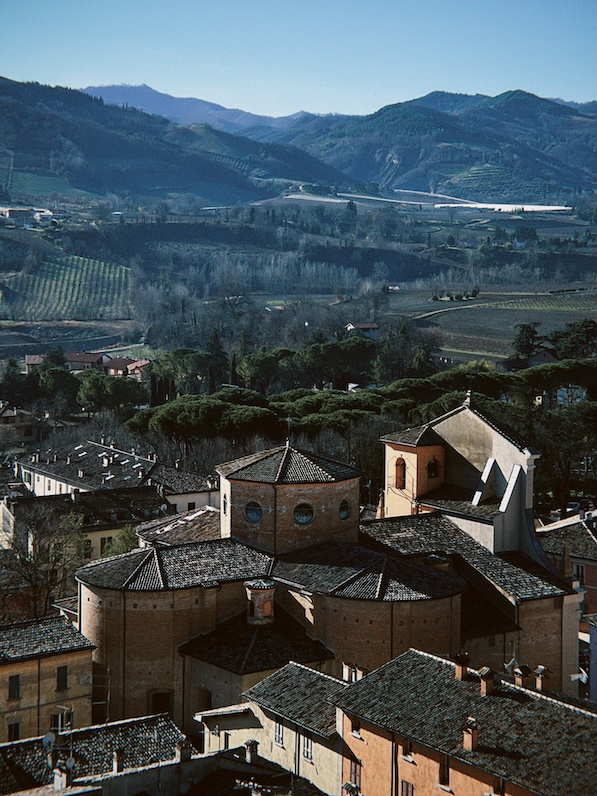
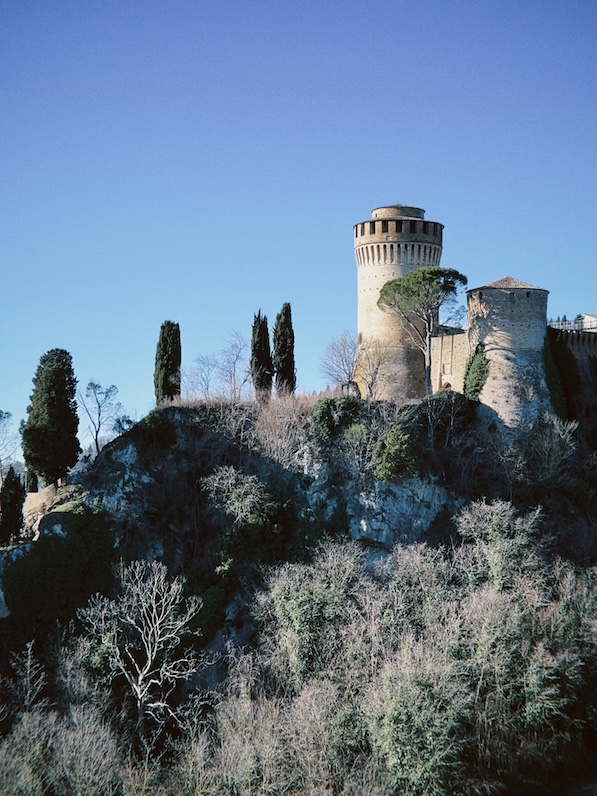
Brisighella is almost too photogenic to be real: pastel houses at street level, and above them, three landmarks — the Rocca fortress, the Clock Tower, and the Sanctuary of Monticino — each perched on its own hill.
The covered Via degli Asini (Donkeys’ Alley), a vaulted medieval walkway, once sheltered mule drivers moving goods through the town.
Today, it’s a reminder of Brisighella’s working past. If you visit on the last Sunday of November, the Olive and Oil Festival celebrates the local Brisighello DOP olive oil — peppery, green-gold, and perfect on warm bread.
Pennabilli
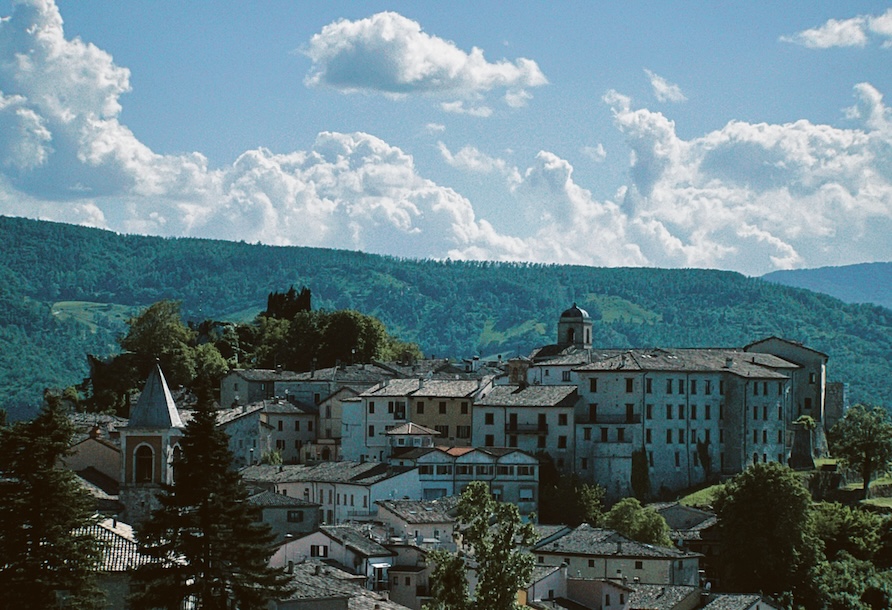
Pennabilli feels like a village painted in words as much as stone – another town that deserves to be in the list of hidden gems of Emilia Romagna.
Artist and poet Tonino Guerra left his fingerprints all over it: the Garden of Forgotten Fruits, where you can taste heritage varieties, and the whimsical Sundials of Memory tucked into hidden corners.
In June, Artisti in Piazza transforms Pennabilli into an open-air stage. Jugglers, musicians, and performers from around the world fill its cobbled streets with colour, rhythm, and laughter — an energy that lingers long after the festival ends.
Roncofreddo
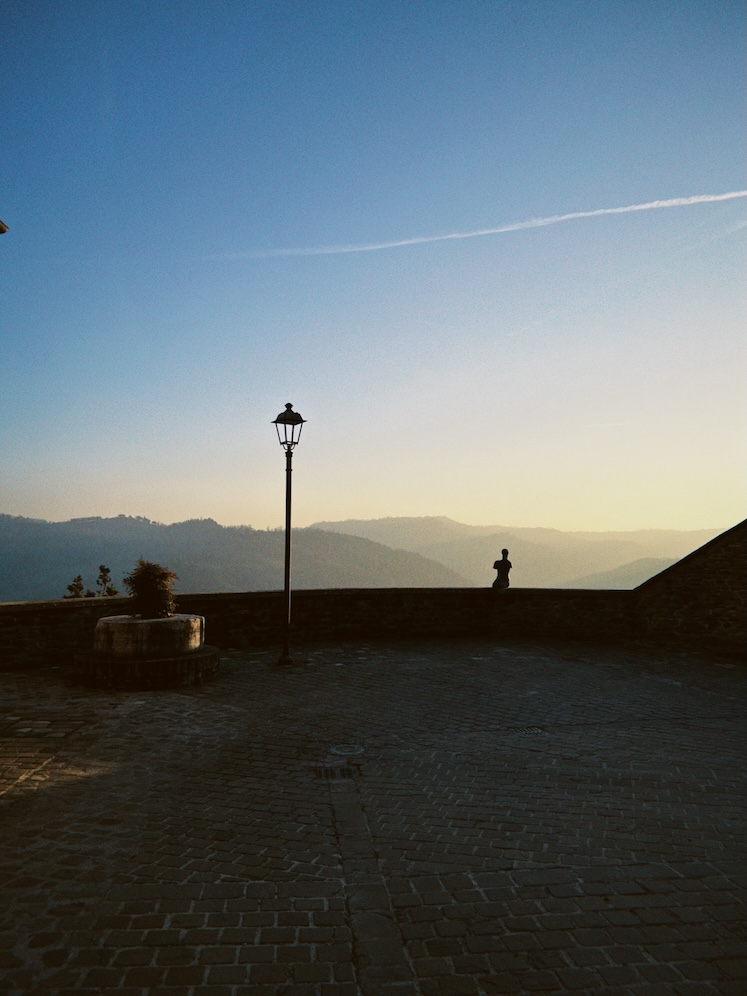
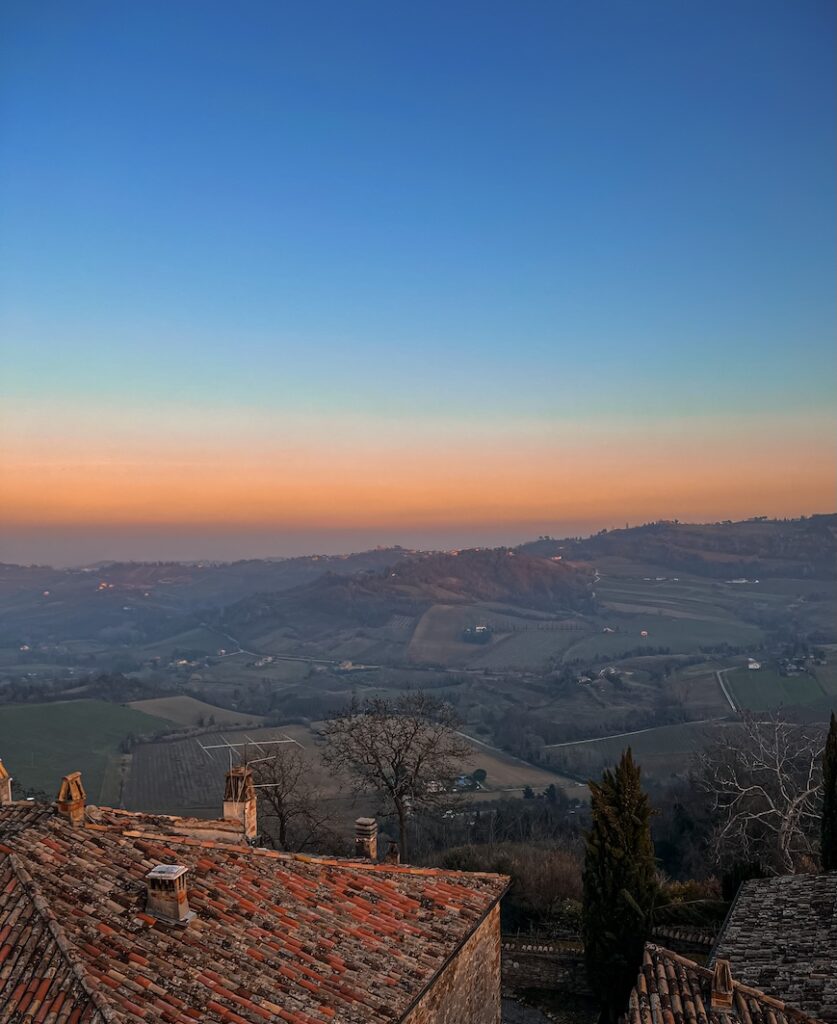
Small but full of life, Roncofreddo perches between Cesena and the Apennines, surrounded by rolling hills striped with vineyards.
Its historic centre is a quiet maze of stone lanes and tiny piazzas where neighbours stop to chat under the shade of old plane trees.
Come for the panoramic views, stay for the pace of life. At sunset, the hills ripple away like waves, catching every shade of gold and rose in the fading light — a natural show that never repeats the same way twice.
Mercato Saraceno
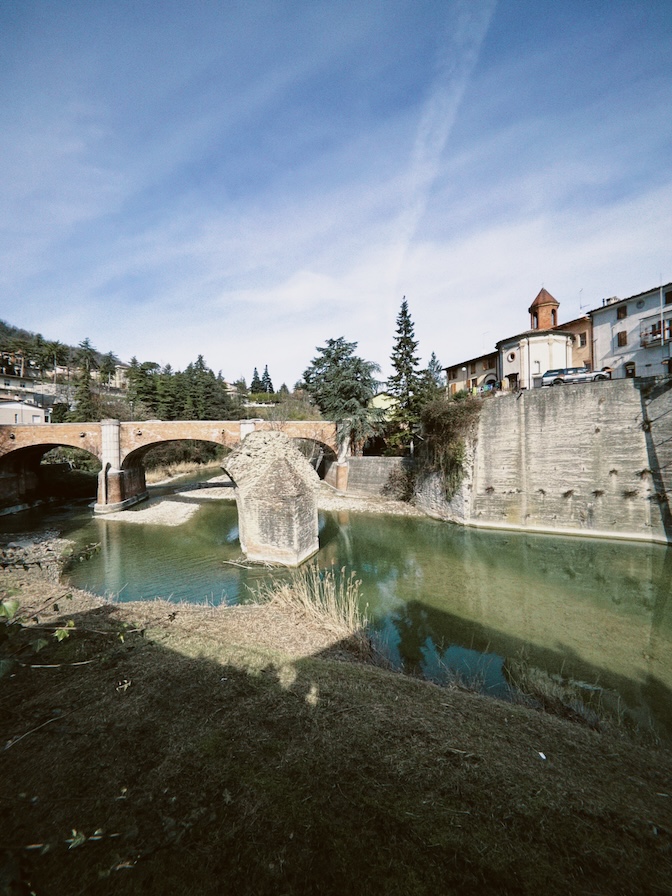
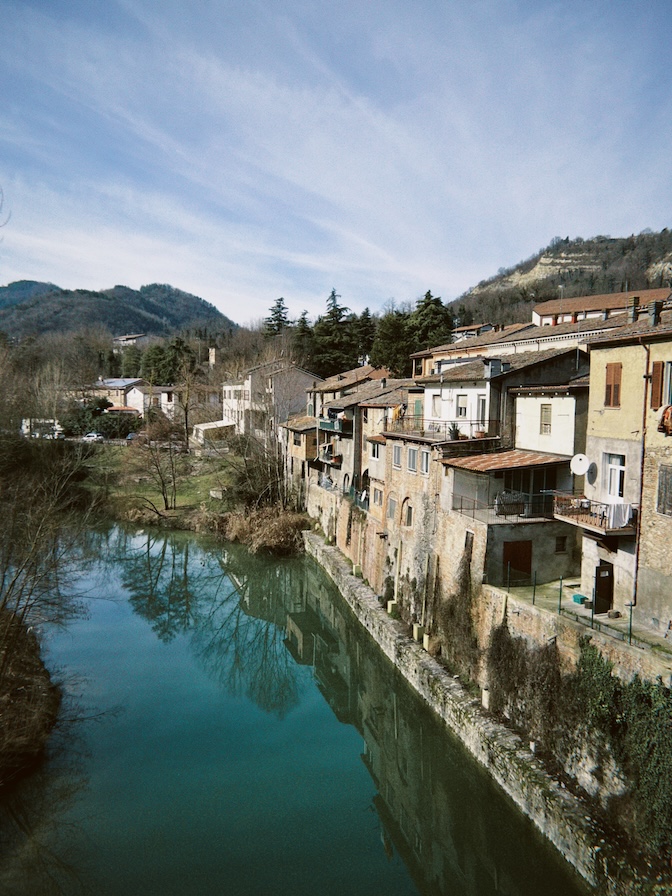
Named for its centuries-old market, Mercato Saraceno still has that sense of being a crossroads — a meeting point for traders, farmers, and travellers moving between the coast and the mountains.
It’s the gateway to the Savio Valley, where the Savio River snakes its way past terraced vineyards and olive groves, nourishing a landscape that has sustained winemaking for generations.
Here, the hills produce Cagnina di Romagna, a sweet ruby-red wine that locals serve with roasted chestnuts when the air turns crisp in autumn.
Longiano
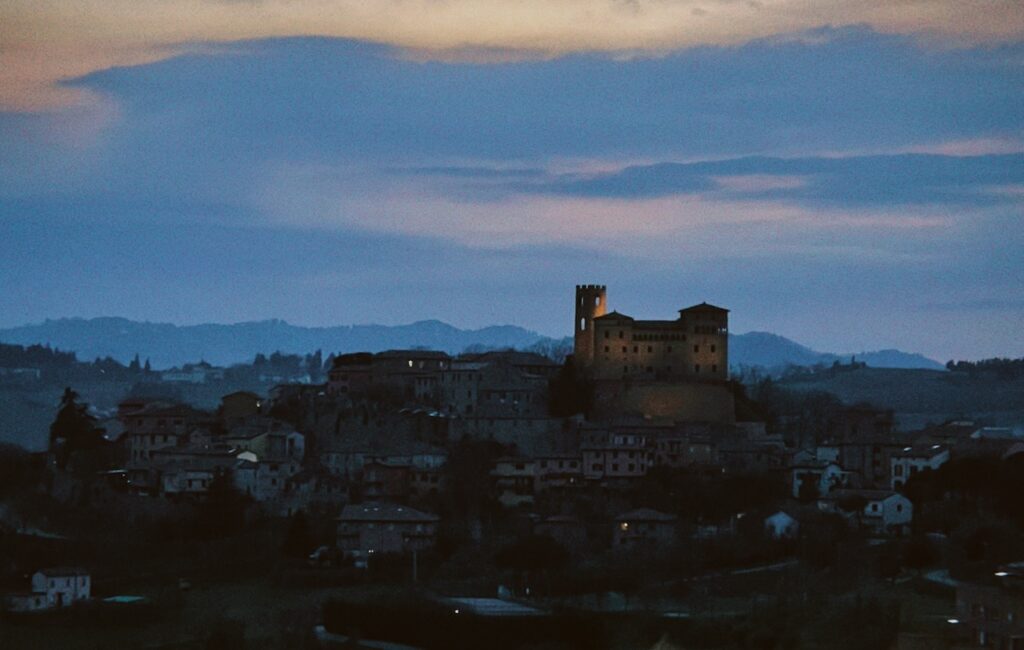
Longiano wears its history well. The Malatesta Castle crowns the village, housing the Tito Balestra Foundation since the early 1990s.
Inside, more than 2,000 works of modern and contemporary art hang where medieval lords once held court.
In winter, Longiano dei Presepi turns every alley and courtyard into part of a vast nativity trail. Some scenes are traditional, others wildly creative — a reminder that even in the quietest season, Longiano still knows how to surprise.
Final Thoughts: Hidden Gems of Emilia Romagna
If Bologna is Emilia-Romagna’s bustling heart, then these borghi are its heartbeat — steady, soulful, and best appreciated slowly.
Whether you start with the truffle-scented streets of Sant’Agata Feltria or the fortress views of San Leo, exploring these marvellous borghi will add depth, flavour, and local charm to any Emilia Romagna itinerary.
Visit one, and you’ll see. Visit them all, and you might just find yourself dreaming in Romagnolo dialect.



